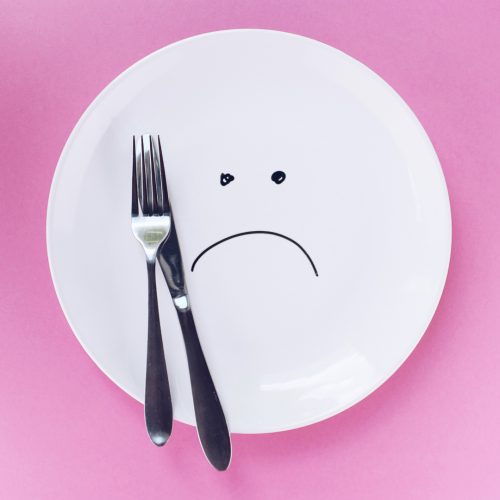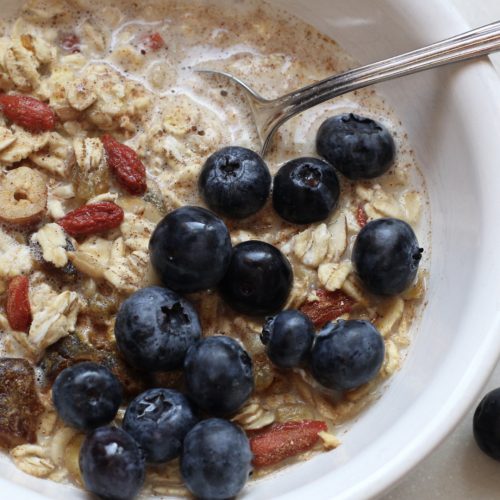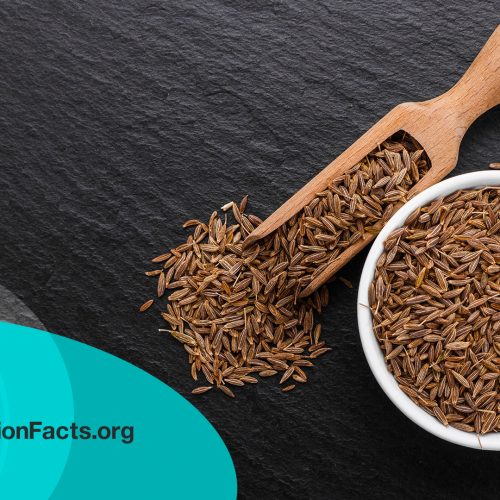What are the metabolic and behavioral adaptations that slow weight loss?
Thanks to millions of years of evolution hard-wiring us to survive scarcity, our body has compensatory survival mechanisms to defend against weight loss. When we start losing weight, we may unconsciously begin to move less as a “behavioral adaptation” to conserve energy. There are metabolic adaptations as well; our metabolism slows down. Every pound of weight loss may reduce our resting metabolic rate by seven calories a day. This may only translate to a few percent differences for most, but it can rapidly snowball for those who achieve massive weight loss. I discuss this phenomenon in my video The Reason Weight Loss Plateaus When You Diet.
During one season of the television show The Biggest Loser, some of the contestants famously had their metabolic rates tracked. As you can see in the graphs below, above and beyond the hundreds of fewer calories it takes to just exist when more than a hundred pounds lighter (at 0:55 in my video), by the end of the season, their metabolic rates had slowed by an extra 500 calories a day (at 1:03 in my video).
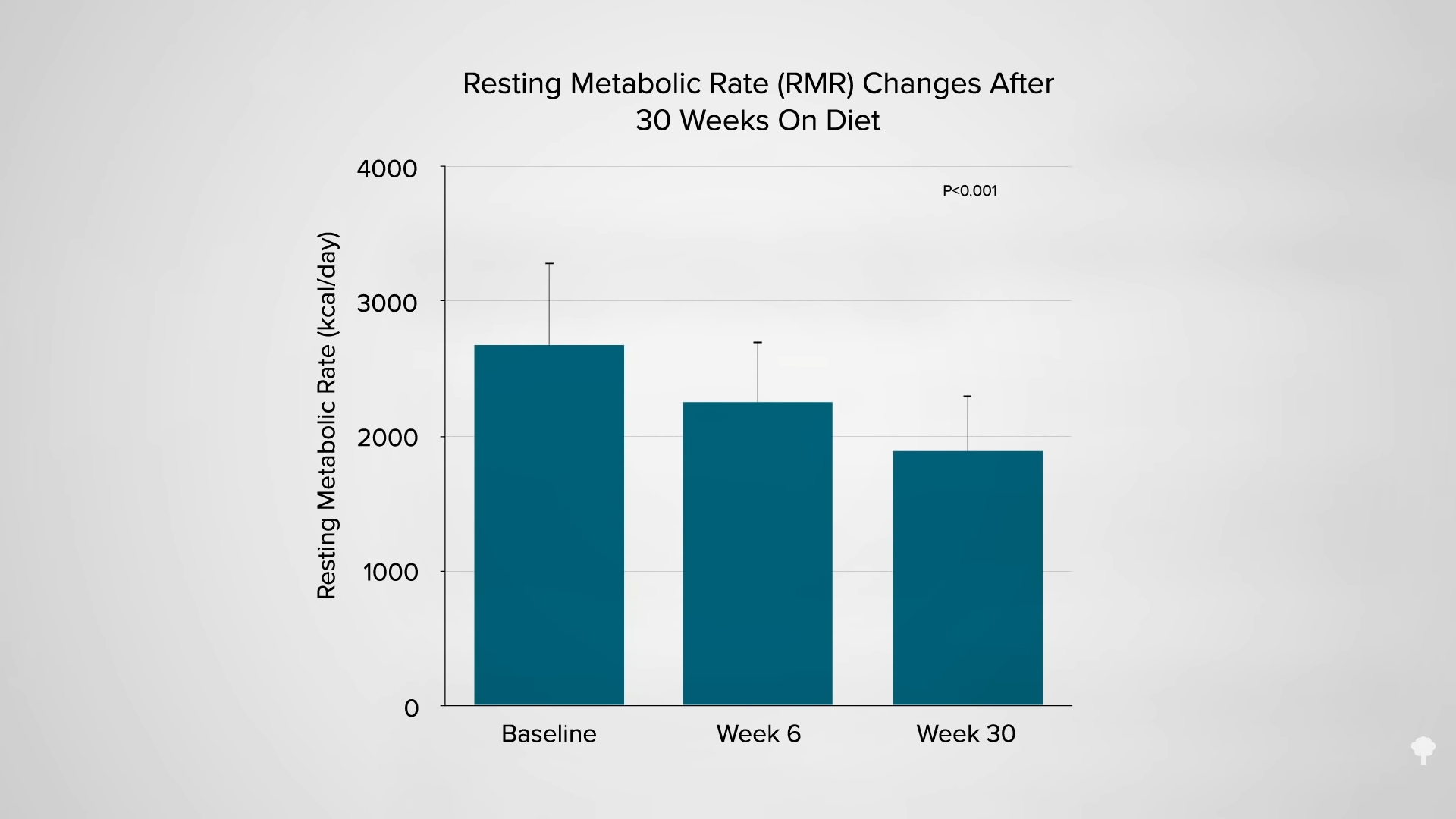
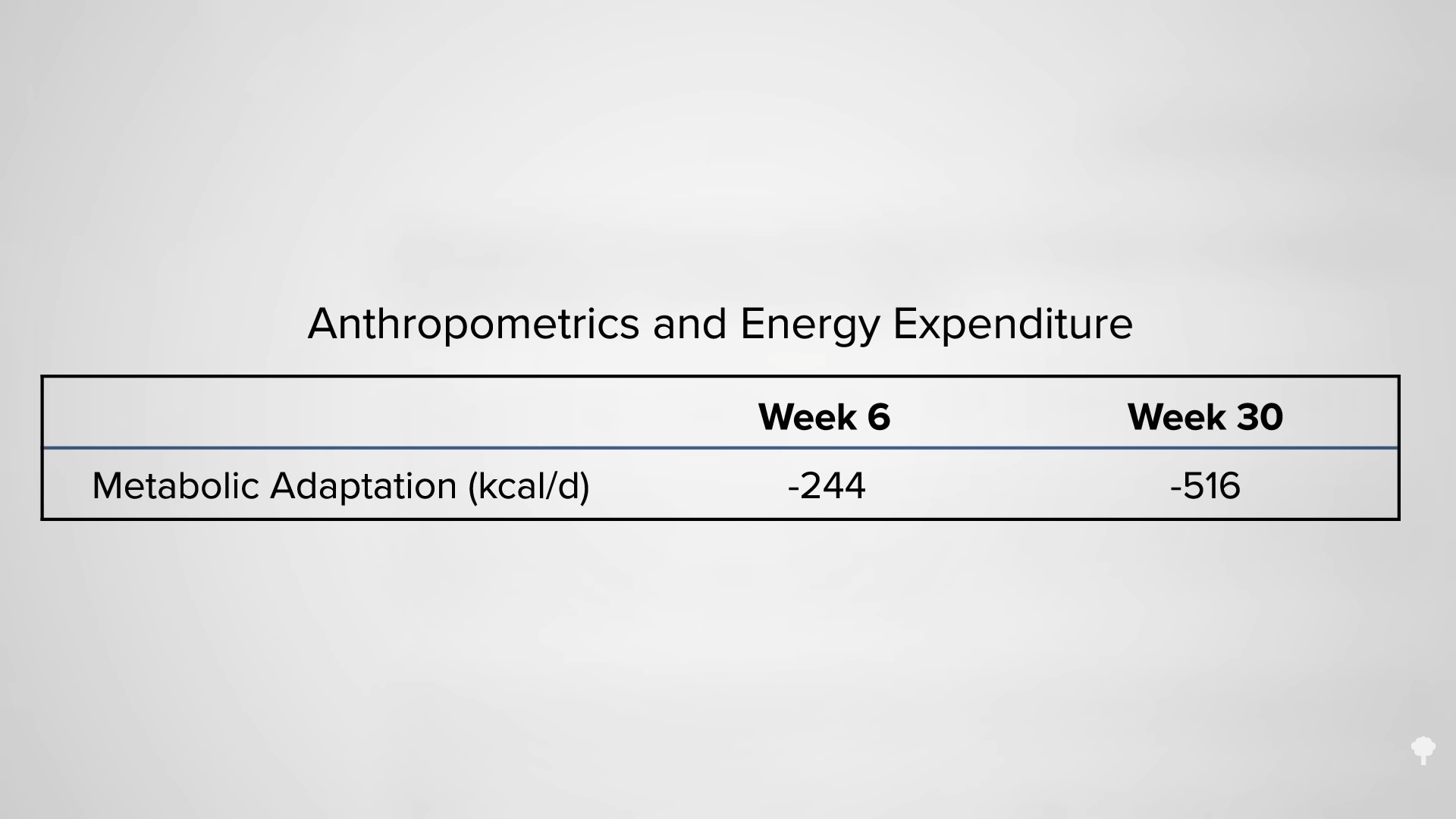
What’s mind-blowing is that when they were retested six years later, they still had the 500-calorie-a-day handicap. So, the contestants had to cut 500 more calories than anyone else their size to maintain the same weight loss. No wonder the bulk of their weight loss was regained. As you can see in the graph below and at 1:23 in my video, most remained at least 10 percent lower than their starting weight, though.

Even a 7 percent drop has been shown to cut diabetes rates about in half, as seen in the graph below and at 1:31 in my video. Still, the metabolic slowing means you have to work that much harder than everyone else just to stay in place.  Analyzing four seasons of The Biggest Loser minute-by-minute, researchers noted that 85 percent of the focus was on exercise rather than diet, though the exercise component accounted for less than half of the weight loss. Even six years after their season ended, the contestants had been maintaining an hour of daily, vigorous exercise, yet still regained most of the weight they had lost. Why? Because they had started eating more. They could have limited their exercise to just 20 minutes a day and still maintained 100 percent of their initial weight loss if they had just been able to keep their intake to less than 3,000 calories a day. That may not sound like much of a challenge, but weight loss doesn’t just slow your metabolism. It also boosts your appetite.
Analyzing four seasons of The Biggest Loser minute-by-minute, researchers noted that 85 percent of the focus was on exercise rather than diet, though the exercise component accounted for less than half of the weight loss. Even six years after their season ended, the contestants had been maintaining an hour of daily, vigorous exercise, yet still regained most of the weight they had lost. Why? Because they had started eating more. They could have limited their exercise to just 20 minutes a day and still maintained 100 percent of their initial weight loss if they had just been able to keep their intake to less than 3,000 calories a day. That may not sound like much of a challenge, but weight loss doesn’t just slow your metabolism. It also boosts your appetite.
If it were just a matter of your weight settling at the point at which your reduced caloric intake matches your reduced caloric output, it would take years for your weight loss to plateau. Instead, it often happens within six to eight months. You can see illustrative graphs below and at 2:34 and 2:43 in my video. You may know the drill: Start the diet, stick to the diet, then weight loss stalls six months later. What happened? Don’t blame your metabolism—that only plays a small part. Instead, you likely stopped sticking to your diet because your appetite went on a rampage.

 Let’s break it down. If you cut 800 calories out of your daily diet—going from 2,600 calories a day down to 1,800, for instance—and your weight loss stalls after six months, what may have happened is, at the end of the first month, you think you’re still cutting 800 calories, but you may actually only be down about 600 calories a day. By month two, you may only be down about 500 calories, 300 by month three, and, by month six, you may only be eating 200 calories less than before you went on the diet. In other words, you may have inadvertently suffered an exponential increase in caloric intake over those six months. But, you may not even realize it because, by that time, your body may have ramped up your appetite by 600 calories. So, it still feels as if you are eating 800 calories less, but it’s actually only 200 fewer calories. Since an 800-calorie drop in intake may slow your metabolism and physical activity by about 200 calories a day, with no difference between calories in and calories out at six months, no wonder your weight loss grinds to a complete halt.
Let’s break it down. If you cut 800 calories out of your daily diet—going from 2,600 calories a day down to 1,800, for instance—and your weight loss stalls after six months, what may have happened is, at the end of the first month, you think you’re still cutting 800 calories, but you may actually only be down about 600 calories a day. By month two, you may only be down about 500 calories, 300 by month three, and, by month six, you may only be eating 200 calories less than before you went on the diet. In other words, you may have inadvertently suffered an exponential increase in caloric intake over those six months. But, you may not even realize it because, by that time, your body may have ramped up your appetite by 600 calories. So, it still feels as if you are eating 800 calories less, but it’s actually only 200 fewer calories. Since an 800-calorie drop in intake may slow your metabolism and physical activity by about 200 calories a day, with no difference between calories in and calories out at six months, no wonder your weight loss grinds to a complete halt.
The slow upward drift in caloric intake on a new diet is not because you got lazy. Once your appetite is boosted by 600 calories after dieting for a while, eating 200 fewer calories at the end is as hard as eating 800 fewer calories at the beginning. So, you can maintain the same disciplined level of willpower and self-control yet still end up stagnating. To prevent this from happening, you need to maintain the calorie deficit. How is that possible in the face of a ravenous appetite?
Hunger is a biological drive. Asking someone to eat smaller portions is like asking someone to take fewer breaths. You can white-knuckle it for a bit, but, eventually, nature wins out. That’s why I wrote How Not to Diet. There are foods that can counter the slowing of our metabolism and suppress our appetite, as well as ways of eating to counter the behavioral adaptation and even eat more food—yet still lose weight.
Due to “the ongoing slowing of metabolism and increased appetite associated with the lost weight,” sustained weight loss requires a persistent calorie deficit of 300 to 500 calories a day. This can be accomplished without reducing portion sizes simply by lowering the calorie density of meals, which can result in the rare combination of weight loss with both an increase in quality and even quantity of food consumed. (See the two graphs below and at 5:34 and 5:40 in my video.) The bottom line is that sustainable weight loss is not about eating less food. It’s about eating better food.
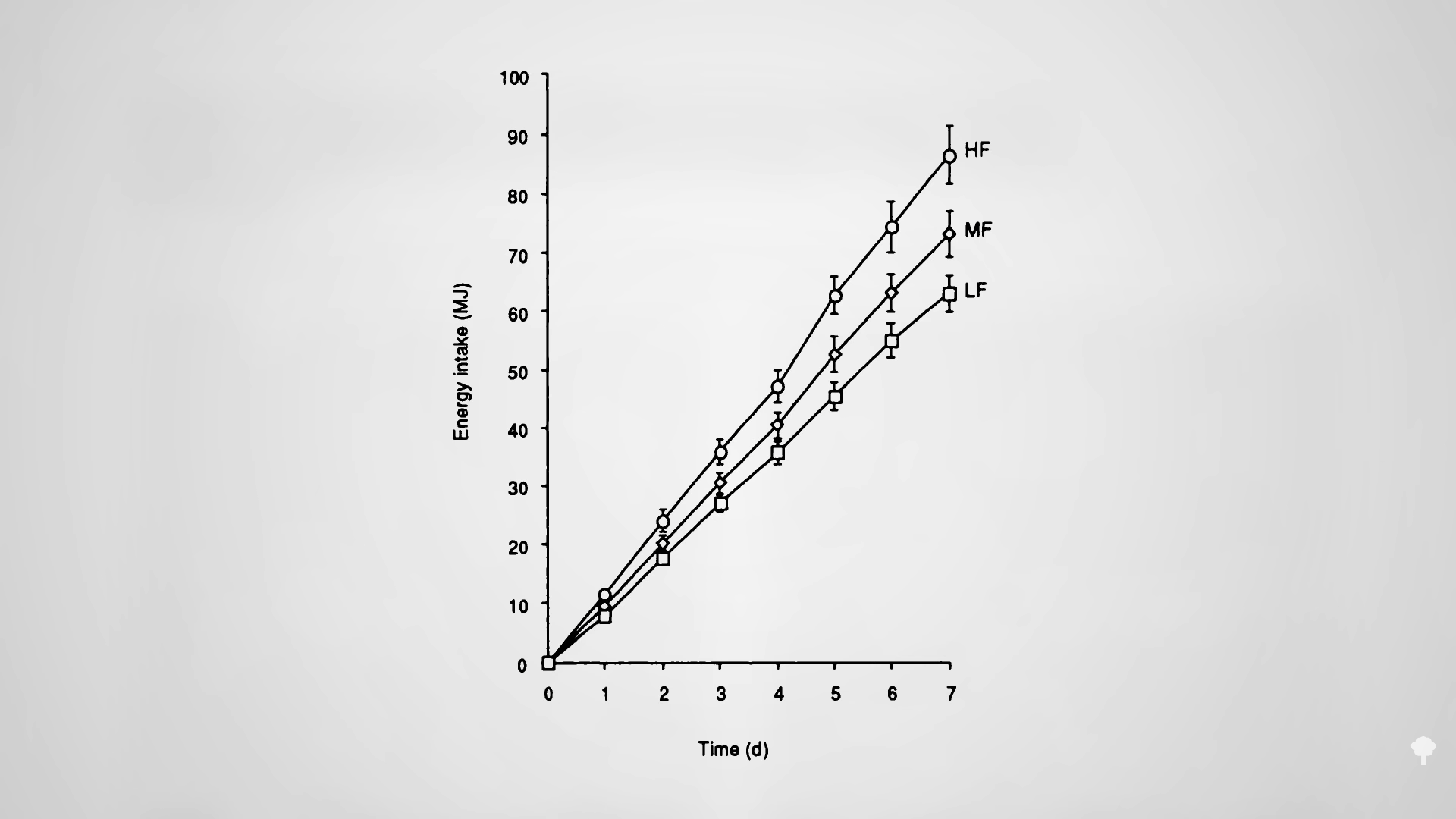
 In my previous video, I dive into how The 3,500 Calorie per Pound Rule Is Wrong. In that case, what’s The New Calories per Pound of Weight Loss Rule? Watch that video to find out.
In my previous video, I dive into how The 3,500 Calorie per Pound Rule Is Wrong. In that case, what’s The New Calories per Pound of Weight Loss Rule? Watch that video to find out.
My book How Not to Diet is all about weight loss and how to break the diet cycle. For more on weight loss, see related videos below.
See the Weight Loss topic page for more relevant videos.


